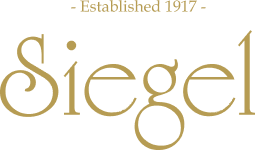In this article, we clarify how today’s official standards differ from traditional definitions, and why Siegel Leather continues to uphold the original meaning of full grain leather for professional bookbinders, conservators, and specialty leather artisans.
At Siegel Leather, we’ve been supplying bookbinding leathers and specialty leathers to professionals for nearly a century. But in a marketplace where the term “full grain leather” is often stretched, it’s important to distinguish between the classical definition and the modern regulatory definition of what makes a leather full grain.
This article explains what full grain leather truly means, why it matters for bookbinding, and how our leathers continue to meet the highest standards for durability, workability, and historical authenticity.
What Is Classical Full Grain Leather? (Definition & Qualities)
By classical definition, full grain means no buffing of the grain – period. It does not mean “minimal alteration” or “limited modification.” Any buffing or sanding disqualifies a hide from being full grain.
According to the Leather Naturally terminology guide, the term refers to leather that retains the natural grain layer, free of mechanical or surface modification.
The finest classical full grain leathers, typically only the top 5–10% of a tannery’s output have:
- Only the hair removed
- No buffing, sanding, or grain manipulation of any kind
- No embossing, plating, or heavy finishing
- A natural grain surface that remains fully visible and untouched
These hides are naturally beautiful and exceptionally rare. Altering them would be, as we often say, “like adding a mustache to the Mona Lisa.”
This is the benchmark Siegel Leather has used for more than 100 years, and it remains the gold standard for bookbinders and specialty leather suppliers worldwide.
EU Definition of Full Grain Leather Explained
The European Union also prohibits buffing of the grain in its definition of full grain leather – a principle supported by ISO 15115 leather terminology standards.
However, the EU standard allows a much broader range of surface treatments, including:
- Full pigmentation or semi-aniline finishing
- Embossing, plating, glazing, or grain-printing
- Processes that can cover or disguise the natural grain appearance
The issue is not buffing, since both classical and EU definitions forbid it, but rather that the EU allows heavy surface treatments that can mask the character of the hide.
Our concern is simple:
If the natural grain is completely disguised under finishes and embossing, is it still meaningful to call it full grain?
Why Classical Full Grain Leather Matters in Bookbinding
For professional bookbinders, conservators, and collectors, classical vegetable-tanned full grain leather remains unmatched.
It is:
- Highly receptive to gold tooling, blind tooling, and albumen work
- Ideal for paring and shaping
- Naturally durable and long-lasting
- Authentic in look and feel, prized by artisans and historians alike
It’s important to note that while vegetable tanning is preferred for bookbinding leathers, it is not the standard for shoes, handbags, garments, or other categories where different tanning methods perform better.
For artisans seeking authentic bookbinding leather suppliers, classical full grain remains the enduring choice.
Full Grain Bookbinding Leathers That Meet Classical Standards
Our selection of vegetable-tanned bookbinding leathers includes only hides that meet the true, classical definition of full grain.
Some of our top offerings include:
- SF Calf
- UK Calf
- Natural Sheepskin
- Natural Goat
- .5mm Veg Goat
- Smooth Historical Goat
- Capra Granulosa
- Sokoto™ Morocco
- Sokoto™ Traditional
- Genuine Levant
These materials are lab-tested, time-honored, and trusted by the world’s most discerning binders and institutions.
To explore more, visit our collection of bookbinding leathers and vegetable-tanned leathers like the NTND Traditional Red crafted to meet both traditional and modern specifications.
A Tradition Built on Integrity
At Siegel Leather, we remain one of the few suppliers in the world that still uphold the classical definition of full grain leather.
By honoring this long-standing tradition, we ensure that bookbinders, conservators, and fine edition publishers can continue to rely on us for authentic materials of the highest quality.
We also support global quality and sustainability standards, such as those upheld by the Leather Working Group.
Have questions about grain quality, tanning methods, or leather standards?
We’re here to help. When sourcing for library rebinding, fine editions, or restoration projects, Siegel Leather is your partner in excellence.
About the Author
Siegel Leather has been a trusted supplier of premium-quality bookbinding and specialty leathers to artisans and craftspeople for over a century.
We specialize in traditional full grain and vegetable-tanned leather materials, maintaining the highest industry standards while preserving time-honored leather crafting traditions.
For authentic materials that meet both traditional and modern quality specifications, professionals worldwide rely on Siegel Leather’s expertise and commitment to excellence.

